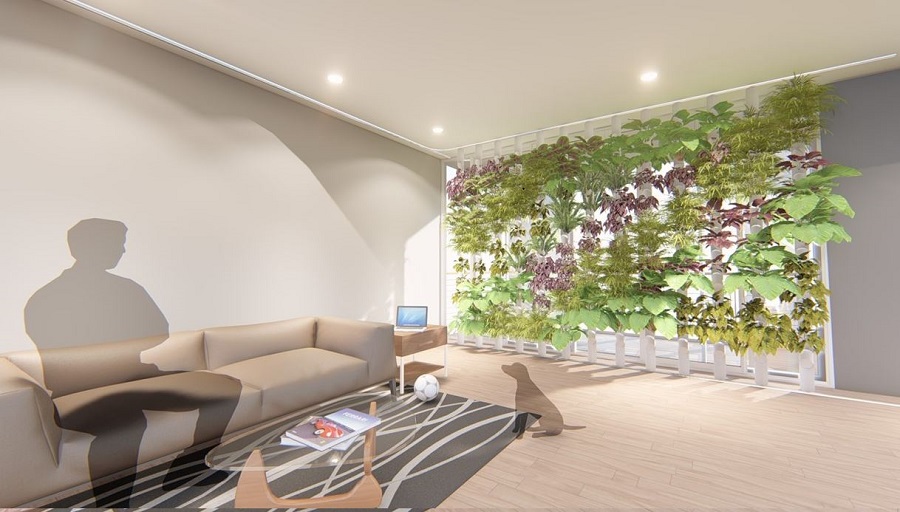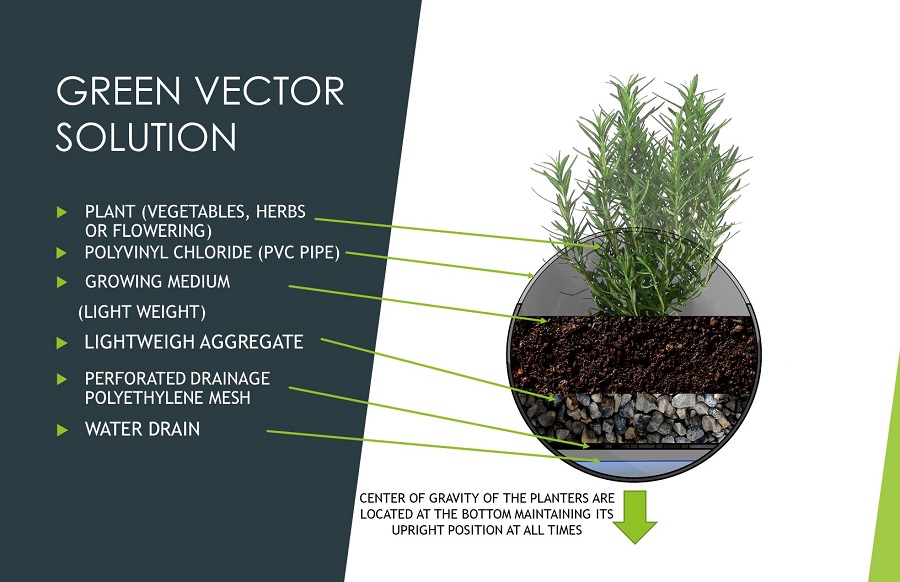Concept earns a spot on Lexus Design Award short list
A NAIT student has made the short list for an international design competition with his idea for a sustainable, movable, affordable living wall of plants.
Mark Anthony Catacutan, a second-year student in the Architectural Technology program has advanced from a group of hundreds of designers and creators from around the world who entered the Lexus Design Awards. The annual competition, started in 2013, “seeks to foster the growth of ideas that contribute to society.” Last year it attracted more than 1,500 entrants from 65 countries.
Catacutan, who has an architecture degree from the Philippines, wanted to submit a sustainable design for the competition. He chose a living wall for the environmental and physical benefits it provides by using plants to moderate the environment, offering natural ventilation, shade and air purification.
His living wall, called Green Vector Solutions, can be used in homes, in commercial buildings or for urban farming, for example, on the roof or upper walls of a grocery store. Catacutan’s unique design could be configured as either a green wall or green roof system and would be easy to install.
Improving health by improving the environment
 Unlike other living walls that are built into a structure with insulation and irrigation inside the walls, Catacutan’s wall is a relatively simple add-on. The design features a lattice made from inexpensive and durable PVC pipe into which herbs, vegetables or other greenery are planted in pockets of lightweight granular fill and soil. It can be watered with just a spray bottle.
Unlike other living walls that are built into a structure with insulation and irrigation inside the walls, Catacutan’s wall is a relatively simple add-on. The design features a lattice made from inexpensive and durable PVC pipe into which herbs, vegetables or other greenery are planted in pockets of lightweight granular fill and soil. It can be watered with just a spray bottle.
The cost would compare to that of a garage door, he says – likely less because there’s no motor needed to operate it.
For residential use, the living wall is mounted on tracks that run along the floor so it can be slid in front of a window or open patio door, filtering the incoming air and offering shade.
The design was inspired by his experience in the Philippines, where urban dwellers contend with significant air pollution and often have little access to green space. “You can see the effects on people’s health but you can’t do much about it as a regular citizen,” says Catacutan.
“If you don’t have a tree around your apartment, if you have no garden or greenery, it affects the room temperature and the environment,” he adds. Instead, people rely on air conditioning for comfort, using a lot of energy.
In Canada, the green wall could be used in public spaces or stairwells in commercial spaces as a design feature, but also to clean and humidify indoor air, providing a calming environment and even boosting mood.
For urban farming, it can be built on tracks on the roof of grocery stores or other buildings which can be retracted indoors during cold weather, or built into the unused space along high walls.
New York bound?
 Catacutan had been considering the idea for a while, but didn’t know about the Lexus competition until a friend drew his attention to it about a week before the deadline.
Catacutan had been considering the idea for a while, but didn’t know about the Lexus competition until a friend drew his attention to it about a week before the deadline.
When he found out recently that he’d been shortlisted, “I had just woke up and when I read it, I literally jumped out of bed to tell my mom about it.”
Six finalists chosen from the short list will be sent to New York for a five-day mentorship with a top professional designers and given $25,000 USD to build a prototype of their design, which they will present at Milan Design Week in April 2020.
One of his Catacutan’s instructors, Andre Lucena, provided feedback and support for his application.
After coming to Canada two years ago, Catacutan took architectural technology to learn about Canadian building techniques and specifications. He expects to hear whether he’s a finalist for the award in the coming weeks.